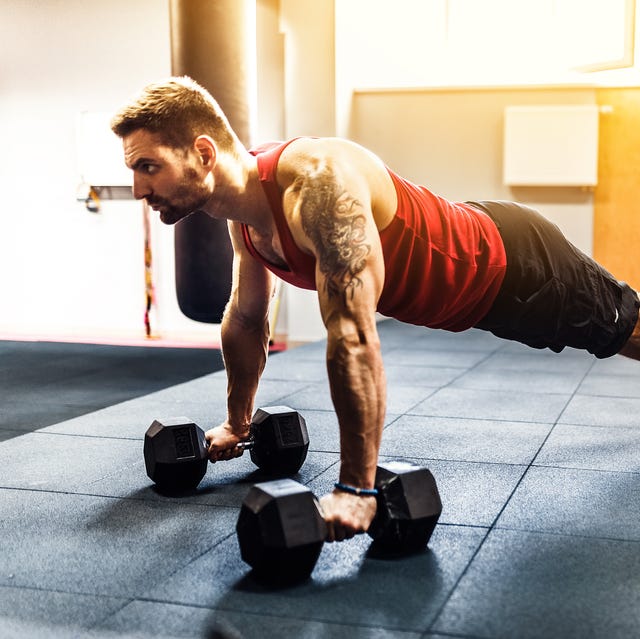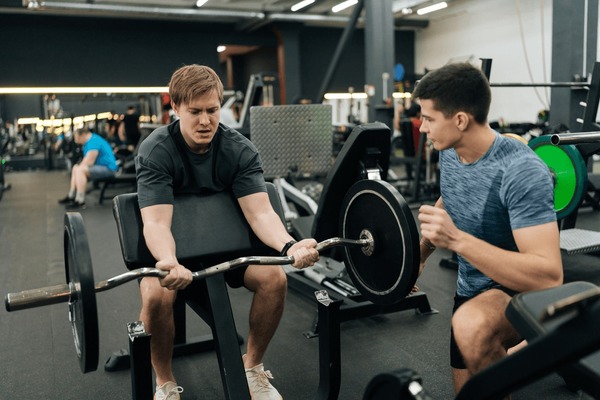Introduction: The Gym-Free Fitness Revolution
In our fast-paced world, physical fitness has become a goal for many, but the obstacles often seem numerous: the cost of gyms, lack of time, or unavailability of equipment. This is where the power of Bodyweight Training emerges as a practical solution that removes these barriers.
Bodyweight training is simply using your own body weight as resistance to exercise your muscles. It is a form of functional training that has proven effective in building strength, improving endurance, increasing flexibility, and enhancing balance, all without the need for any specialized equipment.
This article is not just a list of exercises; it is a comprehensive and detailed guide to understanding the scientific principles behind this type of training, how you can design it to suit any fitness level, and how to turn it into a sustainable lifestyle. If you are looking for an effective, flexible, and economical way to achieve your physical goals, you have come to the right place.
---
Scientific Principles and Amazing Benefits of Bodyweight Training
Bodyweight training relies on the principle of variable resistance and progressive overload, where the intensity of the exercise is controlled by changing the body angle, hand or foot position, or the speed of execution. This makes it effective in stimulating muscle growth and improving the efficiency of the neuromuscular system.
1. Comprehensive Benefits of Bodyweight Exercises
The benefits of this type of training go beyond just building muscle, extending to wide-ranging functional and health improvements:
Increased Functional Strength: Unlike machines that isolate muscles, bodyweight exercises (such as squats and lunges) engage multiple muscle groups simultaneously, mimicking everyday life movements and making the body stronger in functional performance [1]. Improved Balance and Coordination: Most fundamental exercises (such as the plank or lunge) require strong core muscle stabilization, which enhances balance and improves coordination between the limbs and the torso. Absolute and Spatial Flexibility: You can perform these exercises anywhere: at home, in a park, or even in a hotel room. All you need is a small space. Joint and Bone Health: Resistance training with body weight helps increase bone density and strengthen ligaments and tendons, reducing the risk of age-related injuries [2]. Calorie Burning Efficiency: High-intensity compound exercises (such as burpees and mountain climbers) significantly raise the heart rate, leading to effective calorie burning and improved cardiorespiratory fitness [3].
2. How Does the Principle of Progressive Overload Work Without Weights?
Progressive Overload is the key to muscle growth. In weight training, this is done by adding more weight. In bodyweight training, this is achieved by manipulating the following variables:
| Variable | Application Method in Bodyweight Training | Goal |
|---|---|---|
| :--- | :--- | :--- |
| <strong>Increase Reps/Sets</strong> | Performing more repetitions or adding a new set in each session. | Increase muscular endurance. |
| <strong>Decrease Rest Time</strong> | Shortening the period between sets or exercises. | Increase exercise intensity and improve cardiovascular fitness. |
| <strong>Increase Time Under Tension (Tempo)</strong> | Slowing down the eccentric (negative) phase of the exercise, or holding a specific position (like the plank). | Increase Time Under Tension and stimulate muscle growth. |
| <strong>Change Resistance Angle</strong> | Moving from an easier exercise to a harder one (e.g., transitioning from knee push-ups to regular push-ups). | Increase the resistance applied to the muscles. |
| <strong>Unilateral Exercises</strong> | Focusing on one limb (e.g., single-leg lunges or one-arm push-ups). | Correct strength imbalances and increase the challenge. |
---
The Complete Arsenal: Best Bodyweight Exercises for Every Muscle Group
To create a comprehensive training program, all major muscle groups must be targeted. Here is a set of basic and advanced exercises that require no equipment.
1. Lower Body Exercises (Legs and Glutes)
The lower body muscles are among the largest in the body, and training them is essential for increasing metabolism and overall strength.
| Exercise | Target Muscles | Tip for Increasing Difficulty |
|---|---|---|
| :--- | :--- | :--- |
| <strong>Squat</strong> | Glutes, hamstrings, quadriceps. | Perform a Pistol Squat (single-leg squat) or a Jump Squat. |
| <strong>Lunge</strong> | Glutes, quadriceps, and hamstrings. | Bulgarian Split Squat (using a chair to elevate the back foot) or Jumping Lunges. |
| <strong>Glute Bridge</strong> | Glutes, lower back. | Perform the exercise with one leg raised. |
| <strong>Calf Raise</strong> | Calves (gastrocnemius and soleus). | Stand on the edge of a step and lower to the maximum range of motion. |
2. Upper Body Exercises (Chest, Shoulders, and Arms)
To strengthen the upper body, we rely on pushing and pulling exercises, focusing on pushing exercises that can be easily performed without equipment.
Push-Up: The king of upper body exercises. It targets the chest, anterior shoulders, and triceps. For Beginners: Start with wall push-ups or knee push-ups. For Advanced: Try the Diamond Push-Up for greater triceps focus, or the Decline Push-Up to increase the load on the upper chest. Dips: Targets the triceps and lower chest. Can be performed using two stable chairs or the edge of a bed. Pike Push-Up: Primarily targets the shoulder muscles. The body is positioned in an inverted "V" shape with the hips raised high.
Note on Pulling Exercises: Pulling exercises (like pull-ups) are difficult without equipment. They can be replaced with Inverted Rows using a stable table or a strong broomstick, or by focusing on lower back strengthening exercises (like the Superman).
3. Core Muscle Exercises
The core muscles are the center of strength in the body, and strengthening them improves athletic performance and prevents back pain.
Plank: An excellent static exercise for strengthening the abdominal and back muscles. To Increase Difficulty: Try the Side Plank or the Plank with alternating arm or leg raises. Leg Raises: Targets the lower abdominal muscles. Bicycle Crunch: An effective exercise for the oblique abdominal muscles. Superman: For strengthening the lower back muscles.
---
Practical Tips for Designing Your Own Training Program
Now that you know the exercises, how can you put them together into an effective training program? It requires planning and adherence to the principle of Variety and Intensity.
1. Structuring the Workout Session
Every workout session should follow a basic structure to ensure safety and effectiveness:
1. Warm-up: 5-10 minutes of light, dynamic movements (such as jogging in place, joint rotations, light stretches). 2. Main Workout: 30-45 minutes of compound exercises. 3. Cool-down: 5-10 minutes of static stretching to help relax the muscles and reduce post-exercise soreness.
2. Examples of No-Equipment Training Programs
You can choose one of the following methods to organize your workouts:
#### A. Full Body Strength Program
Goal: Build strength and muscle mass. Method: Perform 3-4 sets for each exercise, with 8-12 repetitions, and a rest period of 60-90 seconds between sets. Suggested Exercises: 1. Regular or Jump Squats. 2. Regular or Decline Push-Ups. 3. Lunges (per leg). 4. Dips. 5. Plank (hold for 45-60 seconds).
#### B. High-Intensity Interval Training (HIIT) Program
Goal: Burn fat and improve cardiorespiratory fitness. Method: Perform each exercise at the maximum possible speed for 30-45 seconds, followed by 15-20 seconds of rest. Repeat the circuit 3-4 times, with a one-minute rest between circuits. Suggested Exercises: 1. Jumping Jacks. 2. Jumping Lunges. 3. Mountain Climber. 4. Fast Push-ups. 5. Burpees.
3. Nutrition and Recovery Strategies
Training alone is not enough. You must support your efforts with a proper diet:
Protein First: Ensure you get enough protein to support muscle repair and growth (meat, poultry, eggs, legumes). Hydration: Drinking enough water is essential for performance and recovery. Quality Sleep: Sleep is when muscles repair themselves. Aim for 7-9 hours of quality sleep daily.
---
Overcoming Challenges and Advancing to the Next Level
Some may face a challenge in maintaining exercise intensity over time. Here are some advanced strategies to ensure continuous progress:
1. Intensity-Boosting Techniques
Tempo Training: As mentioned earlier, slowing down the eccentric phase of squats or push-ups to 3-5 seconds increases muscle stress. Supersets: Performing two consecutive exercises for opposing muscle groups without rest (such as a push-up followed by a Superman). Plyometrics: Adding a jumping or explosive element to exercises (such as Jump Squats or Clap Push-ups) to increase explosive power.
2. When Should You Transition to Weights?
Bodyweight training can take you to very high fitness levels. However, you may need to add weights if:
You've Hit a Plateau: You no longer feel an improvement in strength or size despite changing exercises. You Can Perform Too Many Repetitions: If you can perform more than 30 repetitions of a specific exercise, it's time to increase the resistance. Your Goals Require It: If your goal is to build very large muscle mass (Bodybuilding), free weights will be more efficient.
Even in this case, bodyweight training remains an excellent foundation for maintaining functional fitness.
---
Conclusion: Power in Your Hands
Bodyweight training has proven to be not just a temporary alternative, but a comprehensive and sustainable training system that gives you complete control over your fitness journey. True strength lies not in the equipment you own, but in your ability to use your body efficiently.
By committing to the basic exercises, applying the principle of progressive overload, and supporting your training with proper nutrition and rest, you can achieve an amazing transformation in your strength and fitness. Start today, your gym is your body, and it is available to you anytime, anywhere.
--- References
[1] Harvard Health Publishing. The advantages of body-weight exercise. [https://www.health.harvard.edu/exercise-and-fitness/the-advantages-of-body-weight-exercise] [2] PMC. Simple Bodyweight Training Improves Cardiorespiratory Fitness and Muscular Strength in Inactive Adults. [https://pmc.ncbi.nlm.nih.gov/articles/PMC8136567/] [3] TrainHeroic. The Benefits of Bodyweight Training. [https://www.trainheroic.com/blog/bodyweight-training-benefits/] [4] American Sport & Fitness. The Science Behind Effective Bodyweight Training. [https://www.americansportandfitness.com/blogs/fitness-blog/the-science-behind-effective-bodyweight-training] [5] Muscle & Fitness. The No Gym Equipment At-Home Bodyweight Workout. [https://www.muscleandfitness.com/workouts/workout-routines/home-bodyweight-workout-you-can-do-without-any-equipment/]



